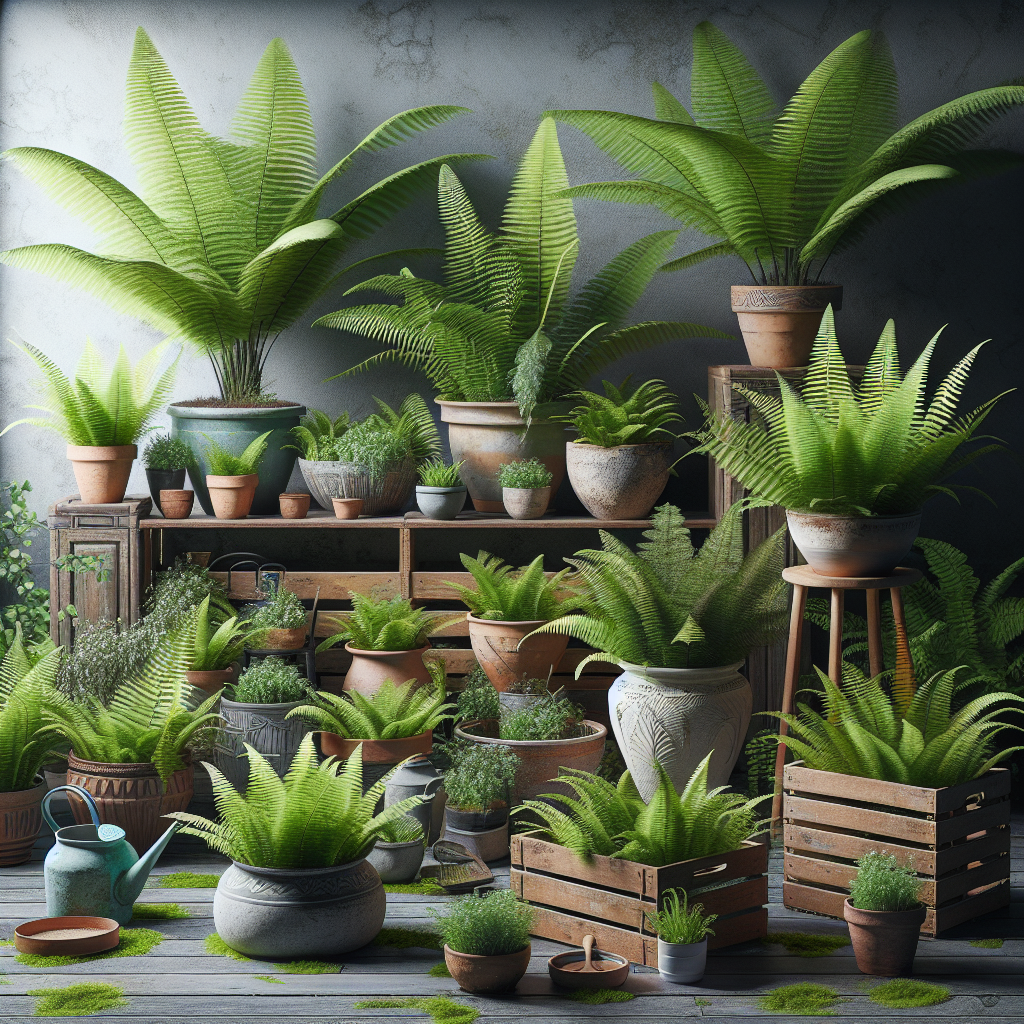Ferns are a popular choice for indoor and outdoor gardens due to their lush green foliage and low maintenance requirements. They can add a touch of elegance and beauty to any space, whether it’s a small apartment balcony or a spacious backyard garden. Growing ferns in containers is a great way to enjoy their beauty while also controlling their growth and spread. This article will provide you with tips and tricks for successfully growing ferns in containers so that you can create your own oasis of lush greenery.
Choosing the Right Container
When growing ferns in containers, it’s important to choose the right container for the job. Ferns prefer well-draining soil, so selecting a container with drainage holes at the bottom is essential. This will prevent water from pooling at the bottom of the pot and causing root rot. Additionally, choose a container that is slightly larger than the fern’s root ball to allow room for growth.
Choosing the Right Soil
Ferns thrive in soil that is rich in organic matter and well-draining. A good potting mix for ferns should include ingredients like peat moss, perlite, and compost to provide the necessary nutrients and moisture retention. Avoid using heavy garden soil or soil mixes that contain large amounts of sand or clay, as these can hold too much moisture and lead to root rot.
Watering
Proper watering is crucial for growing healthy ferns in containers. Ferns prefer consistently moist soil but can be sensitive to overwatering. Water your ferns when the top inch of soil feels dry to the touch, but be careful not to let them sit in waterlogged soil. It’s better to water deeply less frequently than to keep the soil constantly wet.
Light Requirements
Ferns are shade-loving plants that prefer indirect sunlight or dappled shade. When growing ferns in containers, place them in a location where they will receive filtered sunlight or bright, indirect light. Avoid placing them in direct sunlight, as this can scorch their delicate fronds and cause them to wilt.
Temperature and Humidity
Ferns thrive in warm, humid environments similar to their natural habitat in tropical forests. To create optimal conditions for your container-grown ferns, place them in a location with temperatures between 60-75 degrees Fahrenheit and humidity levels of around 50-60%. Consider misting your ferns regularly or placing a humidifier nearby to increase humidity levels if necessary.
Fertilizing
Ferns are light feeders that require minimal fertilization compared to other plants. Use a balanced liquid fertilizer diluted at half strength once every 4-6 weeks during the growing season (spring through fall) to provide your ferns with essential nutrients. Avoid over-fertilizing, as this can lead to nutrient imbalances and damage your fern’s delicate roots.
Pruning
Regular pruning is key to maintaining healthy and vibrant fern plants in containers. Remove any yellowing or dead fronds by cutting them back at their base using clean scissors or pruning shears. Trim back any overgrown fronds or stems as needed to maintain your plant’s shape and encourage new growth.
Pest Control
Like most houseplants, ferns are susceptible to pests such as spider mites, mealybugs, scale insects, and aphids. Keep an eye out for signs of infestation such as discolored leaves, sticky residue on foliage, or visible pests on plant surfaces. Treat infestations promptly using insecticidal soap or neem oil spray applied according to package instructions.
Repotting
As your container-grown fern grows larger over time, it may outgrow its current pot and become root-bound. Repot your fern into a slightly larger container every 1-2 years during the spring before new growth emerges. Gently tease out the roots before transferring your plant into fresh potting mix with good drainage.
Common Mistakes when Growing Ferns in Containers
1) Overwatering: Too much water can lead to root rot and other fungal diseases.
2) Underwatering: Neglecting watering needs can cause stress on your plant.
3) Incorrect Light Exposure: Placing your plant in direct sunlight can scorch its fragile fronds.
4) Using Heavy Soil Mixes: Dense soils impede drainage which leads to root rot.
5) Infrequent Pruning: Removing dead fronds allows room for new growth.
6) Neglecting Pest Control: Regularly inspect plants for signs of infestation.
7) Inadequate Fertilization: Providing proper nutrients ensures strong growth.
In conclusion, growing ferns in containers can be a rewarding experience if you follow these tips and tricks for success. By choosing the right container, soil mix, watering schedule, light conditions, temperature/humidity levels fertilization regimen,
pruning regime pest control measures repotting schedule you can create an oasis of lush greenery that will thrive indoors or outdoors year-round.
Whether you’re looking
to add some greenery
to your living space
or enhance your outdoor garden,
ferns are versatile plants
that offer beauty
and tranquility wherever they’re placed.
With proper care
and attention,
you can enjoy
the lush green foliage
of container-grown
ferns year-round
and create
a stunning display
that will bring
joy
and relaxation
to all who see it.
So go ahead
and give it a try!
Follow these tips
and tricks
for growing
fern plants
in containers,
and watch as they flourish
into beautiful,
healthy specimens
that will bring
a touch of nature’s elegance
to your home,
patio,
or garden!













